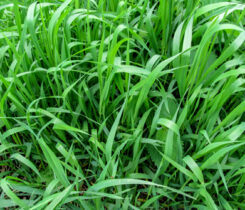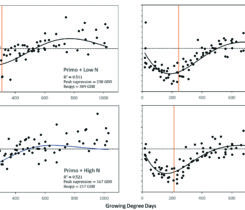Turf MD: The importance of the crown of the turfgrass plant
Located at the base of the grass plant, the crown is the conduit from where the energy flow occurs between the roots and the shoots. The crown is the lifeblood of the turf, producing new tillers, stems (rhizomes, stolons) and adventitious roots. Through the emergence of these structures, you can think of the crown as the heart of the turfgrass plant.
When assessing winter injury or any environmental stress, the health of the crown is of the greatest importance. Simply stated, a healthy crown is a healthy plant; a dead crown means a dead plant.
Expanding beyond this simple statement when considering how resistant or tolerant a turfgrass species is to stress, an important factor is how rapidly the plant recovers post-stress. The pace that new tillers, roots and stems emerge from the crown and replace dead tissue is critical in determining the tolerance of a plant to environmental stress.
Identifying
The crown is a stem, but not the only stem of a turfgrass plant. Stems include the crown, flowering culm and lateral stems, commonly known as rhizomes and stolons. All but the crown has elongated inner nodes that are easily recognizable. The crown, however, is a highly contracted stem with its nodes appearing to be stacked.
As other stems, leaves and most roots originating from the crown grow, the crown grows very little, except for a slight increase in its diameter. I find it difficult to visualize the crown, given its location at the soil surface and its upper portion, including the growing point, enclosed within the basis of sheaths.
Winter injury
Given its small size, injury can still occur differentially to the crown. An example is freeze injury to Poa annua. In this scenario, a Poa annua green may emerge from winter and look healthy and green. However, within a few days, Poa annua begins to die rapidly.
In this case, often, the lower portion of the Poa annua crown has been damaged or killed. Thus, the vegetative tissue may look healthy and actually initiate growth, but the roots are dead, and new roots from the lower axillary buds are not occurring. Potentially atmospheric conditions (ex. sunny, or windy) cause desiccating conditions, resulting from a lack of root support.
Monitoring the health of a turfgrass species, especially one susceptible to winter injury, primarily consists of checking the crown periodically. Peel back the sheath. If the crown area appears white and firm, it is healthy. If the crown is brown and mushy, that plant has died or will soon.
In addition, remove plugs from suspected or potentially injured areas and place them in a well-lit area for several days or weeks. Observing new growth from injured areas provides a clue as to how rapid or not recovery will occur.
An ounce of prevention
Protect the crown by keeping it in close contact with the soil surface. Specific practices going into winter focusing on the crown include:
- Raising the mowing height at least slightly. This practice is especially important for superintendents with warm-season turfgrasses.
- On greens, heavy topdressing in the fall can help to protect the crown from potential exposure to fluctuating air temperatures.
- Along similar lines, minimize thatch. A significant thatch layer results in the plant’s crown losing contact with the soil as it “rises” into the thatch layer. A crown elevated into a thatch layer is readily exposed to temperature extremes.
- Use covers where appropriate. Covers can help to protect the crown from freeze/thaw cycles and rapid drops in temperature.
- Provide good surface drainage. Low wet areas promote the potential for freeze/thaw cycles around the crown and potentially cause rotting of the crown.
Should winter injury occur, you should have a head start on anticipating the severity of the damage and extent by monitoring the health of the crown, thus aiding in your recovery plan.












